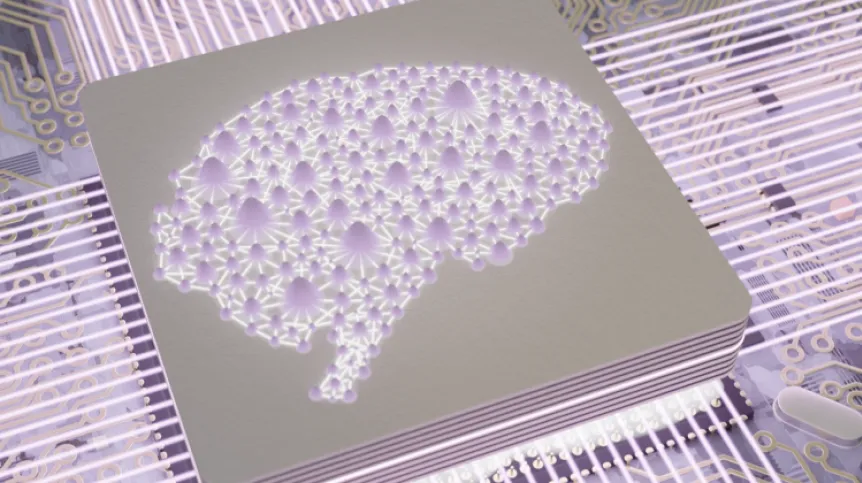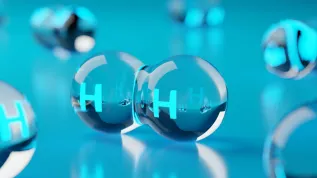
Researchers have become the first in the world to build a neural network (artificial neuron) based on 'massive' photons - light particles behaving as if they had mass (called polaritons).
The team from Warsaw hope that using light in artificial intelligence computing is an opportunity for large energy savings.
Artificial neural networks are used today in a growing number of applications: in speech, voice and image recognition, text translation, control of autonomous vehicles.
Professor Michał Matuszewski from the Institute of Physics of the Polish Academy of Sciences said: “The amount of data we want to process is growing, and the computing power neural networks need is huge and already reaching its limits. In addition, huge amounts of energy are needed to process these data. New technologies are therefore worth considering.”
He added that the hope is to move from electronic devices - operating thanks to electrons - to devices that will use photons, i.e. light particles. He said: “The advantage of photons is that - unlike electrons - their propagation takes place virtually without energy losses.”
Although the idea has long been used in telecommunications - after all, optical fibres, not electronic cables, are used to transmit information over long distances - light is still not used in computing.

Credit: Mateusz Król, Faculty of Physics, University of Warsaw, R. Mirek et al., Nano Letters 2021
Photons are difficult to use in computing because, unlike electrons, they do not interact with each other. And such interactions are useful, for example, in operations in traditional logic gates.
Matuszewski said: “In our research, we propose a solution that is a hybrid of electronics and photonics. The neural networks that we have designed have low energy consumption, but allow us to perform operations with high efficiency.”
During the research, photons were trapped in optical microcavities and placed between two super smooth mirrors. Research co-author, Dr. Barbara Piętka said: “In such conditions, you can make them behave like particles with a very low mass. Adding electrons causes them to interact with each other. Such photons are called polaritons. So we have a strong interaction between light and matter.”
Matuszewski continued: “We used this light to teach pattern recognition,” adding that the optical network was taught to recognize handwritten digits (from the MNIST database) with 96% efficiency. This means that the artificial neuron confuses handwritten numbers only once in 25 attempts. And in one operation, it consumes very little energy - just 16 picojoules.
He said: “This is a prototype for now. We have built an artificial neuron, namely 1 logical XOR gate, which performs operations in a sequential manner, one after the other.”

Fig. Schematic diagram of the use of exciton polariton condensates in a nonlinear XOR optical gate. A binary neuromorphic network was realized from XOR gates and used to recognize handwritten digits from the MNIST dataset. Credit: Mateusz Król, Faculty of Physics, University of Warsaw, R. Mirek et al., Nano Letters 2021
The first author of the publication, Rafał Mirek, added that the XOR gate is a gate that performs logic operations. However, it is special because it is a non-linear gate. He said: “The system we used to build our gate can be used to realize any other logic gate and perform various logic operations.”
Another author of the paper, Andrzej Opala, added: “We mix light and matter so that the interactions in the system are non-linear. This non-linearity is necessary for the effective realization of an artificial neuron.”
Polaritons - unlike ordinary photons - have very small (but non-zero) masses. Thus, there is a transition to a Bose-Einstein condensate. Professor Piętka said: “It is said that Bose-Einstein condensate is the fifth state of matter: next to solid, liquid, gas and plasma. It is a system in which particles, or more precisely bosons, exhibit new quantum properties. The transition to this state is strongly non-linear.”
For now, the team's experiments are performed at liquid helium temperatures but, according to Dr. Krzysztof Tyszka co-author of the report: “We are already working on systems operating at room temperature. We are convinced that it can be done. And it is an important condition for the solution to find practical application in technology.”
He added: “At the end of the road, we would like to create an integrated photonic-electronic system that could, for example, be used as a control system for an autonomous car. Such systems could process information about the conditions on the road much more efficiently than before - with low energy consumption, without the need for an Internet connection.”
Their research was published in the scientific journal Nano Letters (https://dx.doi.org/10.1021/acs.nanolett.0c04696).
PAP - Science in Poland, Ludwika Tomala
lt/ ekr/ kap/
tr. RL













